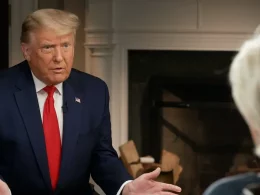Introduction: Gardening is a fulfilling and enjoyable activity that can bring beauty and sustenance to our lives. However, overlooking even the simplest tasks can lead to costly consequences. In this article, we will delve into the story of a gardener who learned a valuable lesson the hard way, losing $3000 a year due to neglecting a seemingly simple task. By understanding their experience, we can avoid making the same mistake and save money in our own gardening endeavors.
The Neglected Task: Pest and Disease Prevention One crucial but often overlooked task in gardening is pest and disease prevention. Many gardeners focus primarily on planting and nurturing their crops but fail to address potential threats from pests and diseases. Unfortunately, neglecting this task can lead to significant financial losses and diminished garden productivity.
Consequences of Neglecting Pest and Disease Prevention: When pests and diseases are left unchecked, the consequences can be devastating. Pests, such as aphids, caterpillars, and beetles, can rapidly multiply and destroy crops, resulting in reduced yields or even complete crop failure. Similarly, diseases, including fungal infections and bacterial outbreaks, can quickly spread throughout the garden, decimating plants and causing significant financial losses. Without proactive prevention measures, a gardener can face ongoing expenses to replace damaged plants and invest in treatments.
Lessons Learned: In the case of our gardener who lost $3000 a year, they neglected pest and disease prevention, leading to costly repercussions. Through their experience, we can glean important lessons:
- Regular Inspections: Conduct regular inspections of your plants to identify any signs of pests or diseases. Early detection allows for prompt intervention and prevents the problem from escalating.
- Proper Plant Selection: Choose plant varieties that are resistant to common pests and diseases prevalent in your area. This proactive step reduces the likelihood of infestations and infections.
- Cultural Practices: Implement cultural practices that discourage pest and disease development. These include proper spacing between plants, adequate airflow, and practicing crop rotation to disrupt pest life cycles.
- Good Hygiene: Maintain good garden hygiene by removing plant debris, fallen leaves, and weeds regularly. These can serve as breeding grounds for pests and sources of infection.
- Natural Pest Control: Embrace natural pest control methods, such as introducing beneficial insects like ladybugs or using organic pest repellents. This approach minimizes the use of chemical pesticides and fosters a healthier garden ecosystem.
- Early Intervention: Act swiftly at the first sign of pests or diseases. Utilize organic treatments or seek advice from local gardening experts to address the issue promptly and effectively.
- Education and Research: Continuously educate yourself about common pests and diseases in your region. Stay informed about the latest preventive measures and treatment options to make informed decisions.
Conclusion: Neglecting the seemingly simple task of pest and disease prevention can have significant financial consequences for gardeners. By learning from the experience of the gardener who lost $3000 a year, we can avoid making the same mistake. Prioritizing regular inspections, proper plant selection, cultural practices, good hygiene, and natural pest control methods can help prevent infestations and infections. By investing time and effort in pest and disease prevention, we can save money, protect our garden investments, and enjoy the rewards of a thriving and productive garden.











